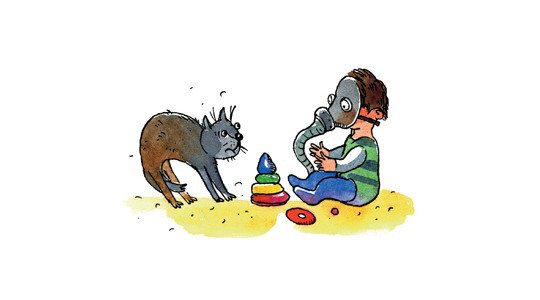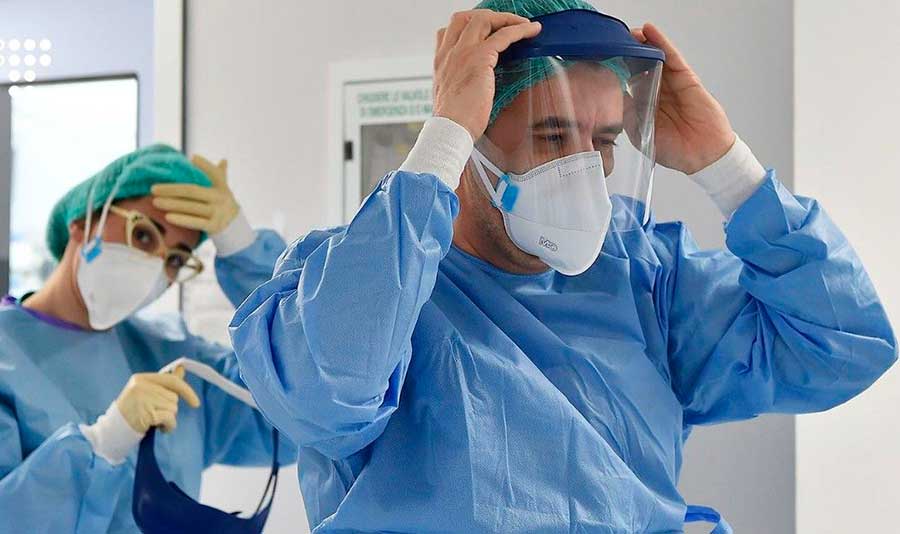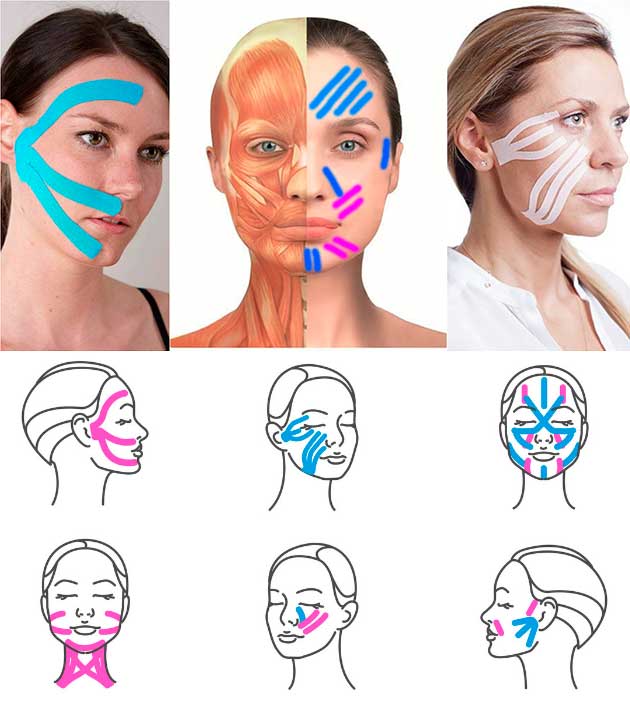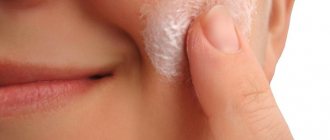Types and purpose, what masks are recommended to wear
A medical protective mask is a product designed to protect the respiratory system from various irritating factors - bacteria, viruses, dust, allergens, aerosol particles, biological fluids.
Based on the duration of use, these protective equipment are divided into disposable and reusable.
The latter option is made from gauze or fabric folded in several layers; you can easily sew them at home yourself.
Disposable products have several distinctive features:
- Consist of three layers. The internal one is made of microporous material that performs a filtering function.
- They provide good air penetration, so breathing is not difficult.
- They have universal sizes and fastenings that ensure a good fit of the mask to the upper part of the face.
- Designed specifically to protect against infections.
Disposable masks are made from 2 types of materials:
- Spunbond. Non-woven, almost weightless material with optimal breathability and hydrophilicity.
- Meltblown. Microporous fibrous fabric that retains bacteria, viruses and microparticles well.
Most disposable masks have meltblown inside, and the outer layers are made of spunbond.
Disposable medical masks can be sterile or non-sterile. The first option is in demand only in operating rooms, that is, where sterility during manipulation is extremely important.
If such products are worn on the street, in public places, they will immediately become unsterile, so there is no point in overpaying for a product with a specific purpose.
Non-sterile masks are classified as procedural masks; they are recommended to be worn to prevent infection and spread of pathogens.
Respirators are also used to protect the respiratory system, but they are used much less frequently compared to masks.
The cost of masks is from 3900 to 5100 rubles
- Respirators are great for allergy sufferers, athletes, and allergy-prone athletes. They are also indispensable for cleaning the house, gardening and cleaning pets.
- All models are equipped with replaceable filters, which only need to be changed once a season. They not only prevent harmful irritants and hazardous substances from entering the lungs, but also partially retain unpleasant odors.
- Each mask has a “specialization”, so you can choose the right model for comfortable outdoor activities all year round.
- In order for the mask to fit perfectly to the face, providing 100% protection against allergens, you need to choose the right size. Read our instructions, and if the calculation results fall within the borderline values, then when ordering, simply specify to the operator that you need to bring two probable sizes.
- Creative and trendy design will not leave either the athletes themselves or their fans indifferent. This mask will definitely become a bright accent of your image.
- All respirators are manufactured in the UK by Respro. The Allergy and UltraLight models are made of hypoallergenic material and are approved by the British Allergy Foundation.
- A mask is not a medicine: it will not cure your allergies, but it will help you feel comfortable when in contact with irritants.
Delivery in Moscow and Russia
© Respirator masks for allergy sufferers and athletes. AllergyMask. Russia Moscow. 2014-2017
The use of various types of allergy respirators sometimes becomes the only protection for very sensitive people. They can be divided into 2 main types: invisible ones, which are inserted into the nose, and masks, which offer maximum protection from all irritating particles.
The main function of any respirator is to protect the nasal passages and purify the inhaled air. It removes up to 99% of harmful impurities from it, allowing residents of megacities and allergy sufferers to protect their bodies from the influence of environmental factors, dust and seasonal pollen.
Can a mask cause allergies?
Many people believe that medical products cannot, in principle, cause allergic reactions. But, unfortunately, this is far from the case. The use of a medical mask will also cause local and general allergy symptoms.
There are several causes of allergic reactions:
- Chemicals contained in the product. Personal protective equipment is impregnated with disinfectants and impregnations that fix non-woven fibers. Naturally, they are tested, hypoallergenic and in most cases completely safe for humans. But with increased hypersensitivity to such components, an allergy develops.
- Reuse. Disposable masks should be disposed of immediately after use. But some wash and iron in order to save money. As a result, this leads to splitting of the fibers of the material and the formation of fabric dust, which can lead to allergies from the upper respiratory tract and eyes.
- Incorrect use. The mask must be worn only in public places and one product must be worn for up to 2 hours in a row. If this rule is neglected, the fabric becomes wet from breathing, traps particles of saliva, mucus, viral infection (if the person is sick), which again enter the respiratory tract, irritating the mucous membranes and causing allergies.
There is a higher risk of allergies to PPE (personal protective equipment) manufactured without meeting accepted medical standards.
Low-quality products can be made from materials not intended for personal protective equipment and impregnated with toxic chemicals, which, of course, greatly increases the likelihood of allergic reactions.
101% suitable
Construction, sawing, car painting, manicure, hair coloring, eyelash extensions, professional and home cleaning
From pollen of trees, cereals and grasses From house and construction dust From hair (dander) of any animals From odors and vapors (paints, varnishes, cleaning products, reagents)
Running in the city center, cycling, shooting at a shooting range, horse riding, paintball! For everyone who wants to at least sometimes breathe air purified from impurities and particles
- Description
- Peculiarities
- Advantages
- Suitable for
Harmful chemicals and air pollutants that surround us in everyday life often cause unpleasant allergy symptoms. Cleaning products, perfumes, paint, cigarette smoke, pollen, animal dander, fabric softeners and laundry detergents have a negative impact on health and cause a lot of inconvenience for allergy sufferers with hypersensitivity.
Respro® Allergy Mask (Allergy) was created specifically for hypersensitive people. All materials used in its manufacture are hypoallergenic. The mask itself is made of soft polyester fiber. Ultra-lightweight and breathable material allows your facial skin to breathe. Polypropylene Techno™ valves, which serve to remove exhaled air, are equipped with plates made of medical silicone. For high-quality filtration of inhaled fine submicron dust, a Hepa-Type™ polypropylene filter is provided.
Comfortable and effective, the mask has been awarded the prestigious Allergy Friendly Product award by the British Allergy Foundation.
Ultra-lightweight and breathable mask with dual exhalation valves Soft, breathable polyester material Latex-free Four sizes Secure Easy Velcro® fit Hepa-type filtration (less than 1 micron, less than PM1) Particulate matter level: sub-micron PM10.
British Allergy Foundation approved Comfortable, fits well Hypoallergenic Breath-free Sizing to suit different face shapes Perfect fit Effective pollen and dust filtration Valves to remove excess heat and water vapor
Doctors' opinion
Since the beginning of coronavirus infection, cosmetologists and doctors have noted a tendency towards an increase in allergies with local manifestations and respiratory symptoms.
POPULAR WITH READERS: Allergy to alder - how to treat seasonal hay fever
More often, people complain of facial swelling and skin irritation in areas where disposable protective equipment is attached. And in most cases, such symptoms are recorded in patients who, due to the specifics of their profession, are forced to use masks for several hours in a row.
Reusable products made from soft natural fabric do not contain chemical impregnations, so, in principle, they should be less likely to lead to allergies.
But for people with seasonal allergies to plant microparticles, they are also dangerous.
The thing is that the material of such products does not retain allergens, and the condensation accumulated inside from breathing promotes the unhindered penetration of irritants into the nose and throat. And this leads to the rapid development of allergies with quite severe symptoms.
Important! Reusable masks retain viruses much worse than disposable models, therefore, they are practically useless as personal protective equipment.
Ambulance
First of all, you need to take antihistamines. Afterwards, you need to go to the store for fresh kefir, tan or ayran. These are interchangeable products. Is it in the refrigerator? Great! We wet a cotton pad and apply kefir liberally to the face. Wash off after five minutes. After 20 minutes, relief will come. But you shouldn’t relax, you need to identify the cause of the body’s reaction to a product or plant flowering, and limit contact with the allergen.

Let's look at several factors that contribute to the development of allergies:
- change in climatic conditions;
- counterfeit decorative cosmetics;
- antibiotics;
- flowering plants;
- reaction to foods (nuts, citrus fruits, seafood);
- chemical components (in house cleaning products).
Fabric dust - what is it?
Disposable protective equipment is not intended for washing, boiling, disinfection with solutions and ironing.
If you subject them to such processing, the fabric included in the medical masks will disintegrate into individual fibers, which in turn will release the so-called fabric dust. It is completely invisible to the naked eye, but is dangerous for the respiratory system.
When you re-wear a washed and ironed mask, microparticles of fabric dust enter the mucous membranes of the mouth, throat, and nose, causing irritation.
In response to this, mucus begins to be produced in increased quantities, clogging the airways and disrupting their normal functioning.
As a result, the prerequisites are created for the exacerbation of chronic allergic diseases, including asthma, and the risk of bacterial and viral flora also increases.
Features of nasal filters
Nasal allergy filters are very small respirators that are incredibly compact. They are practically invisible due to the fact that they are placed directly in the nose. The anatomical shape with a curve and 2 elements for filtration is easily and quickly secured in each nostril. After just a few minutes, any unpleasant sensations completely disappear.
Such a device will not be able to protect against dangerous carbon monoxide and various chemical fumes, but it copes remarkably well with any allergens (pollen, dust, wool). During facial expressions and movements, the filter does not affect the person and his face in any way. The transparent insert in the fixation area is invisible to others.
Invisibility cameras are produced by European and Japanese companies and come in different sizes. Multi-stage filters perfectly purify the air and prevent the spread of allergens on the mucous membrane. Caring for them is quite simple, and they need to be replaced as they wear out.
During testing, such inventions have proven to be highly effective, so we can talk about a whole range of advantages:
- provide breathing only with fresh, clean air without allergens;
- the risk of developing any allergic reaction associated with the nose (rhinitis) is reduced by almost 100%;
- Immunity significantly increases and overall well-being improves;
- during epidemics, nasal filters reliably protect against influenza molecules, acute respiratory infections and other infections;
- provide a certain percentage of protection from exhaust gases, however, in regions with very poor conditions or when working in the chemical industry, the question of using masks rather than nasal filters can be raised;
- small and compact, they do not cause discomfort at all and are very easy to care for and store;
- low cost helps to use filters when needed;
- during use you do not need to know any safety precautions or other rules, so people of any age can use the devices;
- you lead a normal lifestyle and don’t think about allergies;
- Before the first use, you can be sure of 100% sterility.
All devices undergo mandatory medical control, appropriate procedures and tests.
Using filters and masks against allergies is an excellent way to protect against the development of unpleasant side effects. Modern medicine offers very convenient methods of combating seasonal allergies that cannot be treated. And their cost is affordable to everyone.
The real problem for many is the exposure of the body to pollen from flowering plants, which can cause allergies. Therefore, we strongly recommend adhering to several simple but quite effective rules, the observance of which will help such people safely survive the flowering period of such trees (poplar, birch, acacia, alder), shrubs, and herbaceous plants.
- During flowering, try not to open windows and doors (and if you open them, then for a minimum time), since during this period there is a circulation of pollen above the surface of the earth.
- To avoid contact of pollen with the mucous membranes of the eyes, it is recommended to use sunglasses.
- It is not recommended to mow lawns during this period.
- When traveling by car, it is best not to open the windows, but to use the air conditioner.
- If possible, replace the air filters in your car with ones that do not allow pollen to pass through.
- After walking, be sure to wash your face, or better yet, take a shower to wash off even the smallest particles of pollen from the surface of your body, nasal cavity, and eyes.
And the most effective remedy is a mask against pollen allergies, which will help protect your nose and mouth from inhaling an invisible substance . You can buy it at the pharmacy, or sew it yourself. To do this, you need to take gauze, fold it into 4-8 layers, carefully sew it around the perimeter, attach strings to the sides according to the size of your head, and the mask is ready.
A respirator, which is used quite often, also saves you from the unwanted effects of the product . By the way, respirators can be different. Most often they use dust masks or respirators with a valve. They, like masks, are designed to trap fine dust, bee pollen, plant spores, etc.
Not all people know that they are allergic to pollen. Many of them manage to find out about this only after a trip outside the city, since there, for example, at the dacha, it is impossible to hide from the effects of microparticles of pollen, the concentration of which in the air is quite high, although they remain invisible.
The fact is that the symptoms of hay fever, as pollen allergy is scientifically called, are very similar to the symptoms of a cold, which manifest themselves in the form of a runny nose, red eyes, sneezing, nasal congestion, etc. How to find out the cause of sneezing? It’s very simple: during colds, the mucus released from the nose has a transparent, watery appearance, and after two days it becomes thick and acquires a yellowish-green tint. With allergies, the mucus may remain clear for several days, although nasal congestion may increase. Plus, if you are careful, you will notice that during allergic attacks when entering a room, they do not intensify: sneezing begins to attack you when you leave the house.
At-risk groups
People with a predisposition to hay fever, allergic rhinitis, conjunctivitis, and bronchial asthma are most susceptible to allergies to a medical mask.
Improper use of respiratory protection is also dangerous for patients with chronic diseases of the lungs and bronchi.
Local allergy symptoms are often recorded in people with thin, delicate and particularly sensitive skin.
The formation of blisters, peeling, rashes, and pimples is primarily due to poor air circulation in the product, which leads to the skin sweating and, accordingly, becoming more vulnerable.
Nose filters, glasses and masks for allergy sufferers

Let's be friends:

Well, hello spring, pollen and allergies...
I think you have noticed that spring is inexorably approaching, and with it the introduction of allergens, flowering, pollen and dust.
I live in St. Petersburg, in a microdistrict where there is a lot of greenery. Despite this, in the spring, when the snow melts, clouds of dust and sand rush through the streets. The wind picks up from the roads everything that was generously sprinkled on the streets in winter. What should allergy sufferers do when even people with healthy lungs are suffocating?
My son is allergic to birch pollen and has hyperreactive bronchi. Spring walks are a real challenge for a baby.
We protect our lungs with what we could find - nasal filters, glasses, masks. Each of these means of protection has its own characteristics, pros and cons.
Signs of an allergy to masks
Allergies to wearing medical masks most often manifest themselves:
- Contact dermatitis. The main symptoms are hyperemia and swelling of the skin, rashes, itching, irritation.
- Allergic conjunctivitis. Occurs in response to exposure to vapors of chemical impregnations and fabric dust. The eyes become red, swollen, itchy, and severe lacrimation appears.
- Gingivitis and stomatitis. Inflammation of the mucous membranes of the mouth is accompanied by swelling of the gums, itching of the tissues, and discomfort that intensifies during meals.
- Allergic rhinitis. Inflammation of the mucous membranes of the nose, caused by exposure to allergens, is manifested by paroxysmal sneezing, itching of the nasal passages, discharge of clear mucus, and nasal congestion.
People with bronchial asthma may experience severe shortness of breath and an attack of suffocation. An allergy such as Quincke's edema, headache, general weakness, and fever cannot be ruled out.
An allergy to a mask can also manifest itself as a special type of dermatitis - demographic urticaria. Its main manifestations are recorded in the places where the mask fits most tightly to the face, that is, on the bridge of the nose, cheeks, behind the ears, along the lower edge of the chin.
Demographic urticaria occurs due to friction or pressure of tissues on the skin, and most scientists associate the development of the disease with impaired tissue reactivity.
If you are predisposed to pathology, the first symptoms may appear within 10-15 minutes after the onset of exposure to the provoking factor.
But with prolonged friction or pressure on tissue in the same place, demographic urticaria can appear even in those who have never previously suffered from this disease. That is why today medical personnel are at risk for its development.
The diagnosis of demographic urticaria can be established by clearly manifested symptoms.
In those places where the mask fits most tightly or puts pressure on the skin, protruding blisters appear in the form of lines and spots. The irritated areas are itchy, and if you scratch them, this can lead to angioedema.
After eliminating the irritating factor, mild symptoms of urticaria go away on their own; severe symptoms require the use of systemic and external antihistamines.
POPULAR WITH READERS: Allergy to animals - causes, symptoms, treatment of the disease
Allergens bloom, fur and dust?
Are you crying, itching, sneezing, and are you sure that it’s not a cold?
No, just don't open the windows! No, get the animal away from me! No, I can't clean up! You can!
“Well, not the mask!”
At all. Not a single speck of dust will pass through, you will not notice any particles or odor
Gentle on the face, does not obstruct the flow of air, but you need to get used to its presence
Breathe clean air and simply prevent dust, pollen or other particles from entering your lungs
The mask can be worn beautifully, stylishly and even elegantly. You will quickly get used to the new look and you will like it!
What to do?
Disposable masks will have to be used as a means of protection for your own safety for a very long time. Therefore, it is necessary to know how to avoid allergies and what to do if symptoms occur.
To avoid developing allergies you must:
- Buy masks only in pharmacies and carefully study the composition before purchasing.
- Do not wear one mask for more than three hours.
- Throw away disposable products immediately after use.
- It is advisable for allergy sufferers to sew their own masks from gauze folded in 6-8 layers. But they also need to be changed at least once every 3 hours, washed and ironed thoroughly after use.
- After removing the mask at home, thoroughly wash your hands and then your face using hypoallergenic gels.
Facial care
When changes appear on the skin in the form of hyperemia, you must first change your facial care.
After washing, the skin should be treated with a light textured milk or moisturizer.
If acne appears, temporarily refuse conventional cosmetics and proceed as follows:
- Treat rashes with any antiseptic without alcohol - Baneocin, Chlorhexidine, Dalatsin.
- After the skin has dried, preparations with zinc, for example Curiosin gel, are applied to pimples with purulent contents.
- Bepanten cream, Solcoseryl gel or Actovegin are applied to those areas where there are signs of irritation from the tight fit of the mask, including behind the ears. Of course, this should only be done on clean skin. The creams are applied in a thin layer; there is no need to rub them in.
Allergy to a mask can be prevented by using makeup and regular cream correctly.
In the morning after washing your face, apply a light moisturizer or serum to your skin, wait until it is absorbed and only then put on a mask.
For people with skin prone to increased oiliness, cosmetologists advise treating the tissue in the area where the mask is attached with Metrogyl or Curiosin.
These drugs create a thin protective film that prevents the effects of pathogenic microorganisms, which reduces the risk of the formation of pustular rashes.
It is undesirable to treat the face under the mask with thick foundation. They clog the pores and thereby further impair air exchange. Foundations with a light structure can be used where the mask does not fit.
Antihistamines
In case of severe manifestations of allergies, a course of antihistamines will be required. Only a doctor can choose them correctly.
But if the symptoms are very disturbing, and it is not possible to immediately consult a dermatologist or allergist, then you can take drugs such as Suprastin, Claritin, Erius, Blogir-3 in the dosage indicated in the instructions.
Itching and irritation from the skin are well relieved by Fenistil-Gel, Nezulin, and ointments with panthenol. Hormonal external preparations are used if the symptoms are severe, increase or do not go away under the influence of conventional anti-inflammatory ointments.
See the full list of allergy medications here.
Facial tapes
The experience of using medical masks in hospitals showed that after a few hours of wearing them, areas of irritated skin appeared on the face, which provoked itching, scratching, pain, and allergies.

It was problematic to withstand such discomfort throughout the entire shift, which lasted up to 12 hours, so the medical staff began using tapes (preferably matched to the color of the skin) or fabric-based patches.
They are glued to the face in strips around the bridge of the nose and cheekbones. And also in those places where the mask constantly rubs.

This solution prevents the product from coming into contact with the skin, which reduces the likelihood of allergies and other diseases.
Tips and tricks
The recurrence of allergies can be prevented by following several rules:
- undergo regular medical examinations;
- follow the doctor's recommendations;
- use hypoallergenic cosmetics;
- do sensitivity tests before using new cosmetics;
- check the composition of cosmetics for the presence of dyes, fragrances and other substances;
- do not mix cosmetics;
- check cosmetic ingredients for compatibility;
- monitor expiration dates;
- Follow the rules for storing cosmetics.
Main rules
Allergy to medical masks, unfortunately, is not a myth. The likelihood of its development is higher in people with a predisposition to allergic diseases, but the occurrence of unpleasant symptoms cannot be ruled out even in a completely healthy person.
Avoiding allergies helps to follow the rules for using personal protective equipment, hygiene procedures, and proper facial care.
You can cope with symptoms that are insignificant in severity on your own, but if the changes increase, you need to visit a qualified doctor as soon as possible and undergo the course of therapy prescribed by him.
If you find an error, please select a piece of text and press Ctrl+Enter.
Glasses for allergy sufferers
We paid a lot of attention to protecting the bronchi and nose. What about the eyes? Unfortunately, allergens can easily penetrate the mucous membranes of the eyes.
For those who wear full face masks, this problem does not exist - but I suspect that they are in the minority. Personally, full-face masks make me think of post-apocalyptic science fiction.
As always, there is a way out. If you can't find special allergy glasses, try swimming goggles or ski masks. Above I wrote about glasses for cutting onions - also excellent protection. Use anti-allergy eye drops and do not wear contact lenses.











